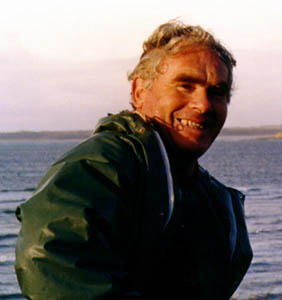 The earliest reference to Coney Island in official documents dates from
December 1616, when in a Chancery Inquisition it is styled "Innishmulcloyha, alias
the Cony Island."
The earliest reference to Coney Island in official documents dates from
December 1616, when in a Chancery Inquisition it is styled "Innishmulcloyha, alias
the Cony Island." In 1749 there was only one inhabited house on Coney Island in which resided Bryan McGowan, his wife and two children. A century later there were twenty-four houses and a population of 124.
In pre-famine times it was a very popular resort for bathers from inland areas of County Sligo and further afield, with as many as three hundred visitors staying there at a time. After the Famine there was a sharp decline in the resident population. In 1851 it was 104; ten years later 95 and by 1901 it had been reduced to 62 inhabitants.
The census of 1901 lists the following families. The numbers in each household are in brackets:
| Joseph Flood (6) | Michael Carty (8) |
| John Carty (8) | Martin Ward (1) |
| James Ward (10) | Daniel McGowan (7) |
| James Flannery (2) | Hugh Feeney (3) |
| John McGowan (4) | Patrick Feeney (2) |
| Michael Haran (10 plus 2 lodgers) | Catherine Haran (1) |
 The earliest reference to Coney Island in official documents dates from
December 1616, when in a Chancery Inquisition it is styled "Innishmulcloyha, alias
the Cony Island."
The earliest reference to Coney Island in official documents dates from
December 1616, when in a Chancery Inquisition it is styled "Innishmulcloyha, alias
the Cony Island."
In the late 17th century Coney Island was in the possession of Benjamin Burton. By 1715 he had leased it to George Ormsby of Strandhill, and seventy years later it passed into the hands of George Dorran of Ropefield, now known as Cooloney, and Primrose Cottage. Shortly after acquiring the Island, Dorran gave it as a dowry to his youngest daughter, Olivia, on the occasion of her marriage to Thomas Meredith of Cloonamahon in 1788.
In the mid 19th century Captain Thomas Meredith and George D. Meredith shared the ownership of the Island. Captain Meredith had 311 acres and George 77. But part of the Island was let off to tenants.
One of the tenants was Thomas Dobbin, a leading Sligo merchant, who had sixteen acres and two Bathing Lodges. He died there in 1860. The other tenants on the Island in 1858, were John and Darby McGowan; Bryan and James Ward; Michael Higgins; Patrick Ruinan; Hugh and Martin Feeney; Hugh Haran and Patrick and Michael Carty.
The population decline has accelerated during the present century. By 1911 it had fallen to 59. The Island school was closed in1940 and today there are only five permanent residents, namely John McGowan, his wife and three children. The clock has turned full-circle in a little over two centuries.